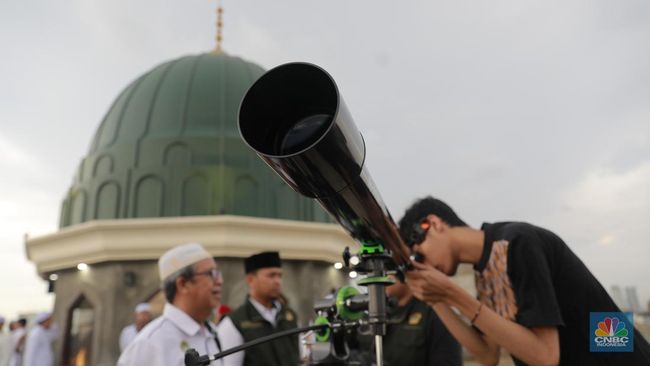When the weather heats up, you may want to consider extra cooling measures. A good tower fan can help you keep your space cool without a huge increase in your electric bill. Most tower fans move from side to side and some even connect to smart home setups. Some even come with voice assistant support, built-in air purifiers or other useful advances.
- Best Tower Fans for 2025: We Pushed Them to the Limits
- What is the best tower fan?
- Best tower fans
- Best overall tower fan
- Best tower fan upgrade
- Best budget tower fan
- Best overall value tower fan
- Best compact tower fan
- Tower fans compared
- How we tested tower fans and what we were looking for
- Other fans we tested
- Factors to consider when buying a tower fan
- What if I want to use a smart plug?
- What we updated
- FAQs
We tested a dozen of the top tower fan options, analyzing their performance and how they felt to find the best options. One advantage I quickly found was that tower fans are slim enough to fit into tight spaces while still providing surprisingly powerful cross-ventilation. Here are my top picks.
What is the best tower fan?
I ultimately chose the Honeywell QuietSet tower fan, a feature-rich model that was indeed the quietest fan I tested. It also combines onboard controls with a far-reaching remote to shift among eight speed levels, a timer, oscillation and dimming options.
But I also made choices for a compact tower fan, a model that can help you save a bit more money and other choices for different users. Take a look at the whole list before making a final call.
Best tower fans
Pros
- Very quiet
- Fairly affordable around $70
- 8 total fan speeds for lots of choices
- Customization for light dimness and other settings
Cons
- One year warranty is a bit short
- No smart home integration
Why I like it:
Tower fans generate noise, which might be a problem if you're planning on using one while you sleep or binge-watch your favorite TV shows. Fortunately, the quietest fan I tested, the Honeywell QuietSet, also proved to be a well-rounded option for everyone.
Along with holding its highest-speed setting to a best-in-class 41 decibels (measured at a distance of 30 inches), the QuietSet was also one of the most energy-efficient fans I tested, drawing just 36 watts at full blast. Speaking of settings, the QuietSet offers eight speeds, more than nearly any fan I tested.
The slim, rocket-shaped design is sturdy and relatively compact, the batteries-included remote control docks neatly in the back when not in use and the upward-angled controls on top are easy on the eyes. You can customize the brightness of those LED lights on top too.
Who is this for:
Buyers who want a very quiet fan that also offers a whole lot of speed options.
Who shouldn’t buy it:
People looking for a more compact tower fan, buyers who really want to find a fan for less than $50.
Pros
- 10 speed options
- Energy-efficient
- Smart home support
- Air quality and other additional sensors
- Very comfortable air flow
Cons
- Amazingly expensive
- Highest settings aren't very quiet
Why I like it:
In ultrahigh-end tower fans, Dyson is awfully tough to beat. Its latest, the Dyson TP07, is a behemoth with king-size activated carbon and glass HEPA air filters hugging the base intake. That allows it to purify the air it puts out, removing things like dust and allergens from the air you breathe. Dyson claims it can catch particles as small as 0.3 microns wide. You don't have to spend that much on every air purifier but if you want a combo option this is the elite choice.
The Dyson also boasts 10-speed settings ranging from an ultraquiet 28 decibels up to a 48-decibel blast of concentrated air. It was the most comfortable tower fan I tested, too, with a cool, steady stream of air that feels like a much less forceful version of one of Dyson's bathroom hand dryers.
An LCD screen on the front of the device tracks air quality in real time but you can also set it to display things like the ambient room temperature or the relative humidity. You can also customize the oscillation angle between 45-, 90-, 180- and 350-degree settings, which is a nice, unique touch. The sleek remote control docks magnetically on top of the fan when you aren't using it.
On top of all of that, the TP07 features app-enabled smarts. I'll admit I didn't spend too much time testing all of the features but the app offers a detailed look at the air quality in your home and it lets you create custom cooling schedules too. You can also use it to customize the fan's autopilot mode to your liking. The TP07 also supports voice control via Alexa or Siri.
The one big downside? Dyson is infamously expensive and to get the very best you'll have to pay more than $600. That's too much for many people unless you're looking into a serious upgrade.
Who is this for:
Buyers without budget limitations who want a tower fan that does everything and does it well.
Who shouldn’t buy it:
Anyone who wants to keep the fan cost within reasonable levels.
Pros
- Affordable at about $50
- Energy-efficient
- Ambient temperature reading proved very accurate
- Autopilot mode
- Easy to clean
Cons
- Dated design
- Noisy at high levels
Why I like it:
At about $50, the TaoTronics TT-F001 isn't an inexpensive tower fan but it makes up for it with a great mix of features and packs plenty of cooling power into a compact, 35-inch build.
Among the fans I tested, its 60-watt power draw was second only to the Dyson but its highest-speed setting was the second noisiest, ringing in at 48 decibels. Neither factor is a deal-breaker, particularly if you need a smaller tower fan but don't want to sacrifice cooling power.
As for the features, the TT-F001 includes an ambient temperature reading on the admittedly dated-looking display. Those readings proved to be completely accurate when I used some of the thermocouples left over from my waffle maker tests to double-check them. There's also an autopilot mode for easier operation. I appreciated the artificial breeze modes and the removable cover in the back, which makes the fan easier to clean.
Who is this for:
Buyers who want a very competent tower fan on a budget.
Who shouldn’t buy it:
Peope who are sensitive to fan noise and dated designs.
Pros
- Strong speed settings for larger areas
- Built-in temperature sensor for automation
- Overall a great performance for the value.
Cons
- No app controls
- Gets a bit noisy at higher levels
Why I like it:
CNET has reviewed other Levoit products positively, including humidifiers and air purifiers (I used a Levoit air purifier myself for some time), so it's no surprise that one of their fans would end up on our lists. The brand excels at combining affordability with performance, even if it doesn't tend to offer many extra features.
This 36-inch Classic mode goes down to 28 decibels at the lowest of its five speeds to help when sleeping, but at higher levels, it can reach a stronger 25-feet-per-second wind speed to tackle large spaces (the 90-degree oscillation helps too). Built-in sensors help the fan automatically adjust airflow based on ambient temperatures, making it a great set-it-and-forget-it option.
Who is this for:
Buyers who want a fan for larger rooms, so they don't have to worry about micromanaging.
Who shouldn’t buy it:
People looking for extra smart features, buyers who want a more compact, quieter fan.
Pros
- Clever internal oscillation design
- Fairly affordable at $60
- Comfortable "wind" modes
- Compact at 40 inches
Cons
- Plasticky design
- Only 3 fan speeds
Why I like it:
Usually available at Walmart for about $60, this Better Homes and Gardens-branded tower fan is one of the most compact on our list at 40 inches, good for those who want a smaller, three-speed fan to fit in tiny spaces. It also offers a natural wind mode and a gentler "sleep wind" mode for extra comfort.
The sturdy, understated design features a grill that oscillates within a fixed base, making it less conspicuous than a tower fan that turns entirely from side to side. I found it plenty powerful enough to cool off a medium-to-large room on a hot day.
I'd like it better if the warranty ran longer than a single year and if the build weren't quite so plasticky but those trade-offs are more than fair at this price. If you're looking for a capable tower fan that feels more expensive than it actually is, this one fits the bill better than anything else I've tested.
Who is this for:
Buyers who want an affordable, compact fan to fit in smaller spaces.
Who shouldn’t buy it:
People looking for bigger, more powerful cooling over a larger space.
Tower fans compared
| 41 in. | 10 lbs. | Low, Medium High, Natural Wind, Sleep | No | 35 - 46 db | 48W | 1-8 hours | Yes, magnetic | Yes | None | 1 year | $56 |
| 35 in. | 6.3 lbs. | Low, Medium, High, Natural Wind, Sleep | Yes | 38 - 48 db | 60W | 1-12 hours | Yes, dockable | Yes | None | 1 year | $51 |
| 40 in. | 9.2 lbs. | Sleep, Whisper, Calm, White Noise, Relax, Refresh, Cool, Power Cool | No | 26 - 41 db | 36W | 1, 2, 4, 8 hours | Yes, dockable | No | None | 1 year | $68 |
| 41 in. | 10.9 lbs. | 1-10 | Yes | 28 - 48 db | 180W | Timed shutoff available in app only, 1-9 hours | Yes, magnetic | Yes | Wi-Fi, app controls, voice compatibility with Siri and Alexa | 2 years | $450 |
This close-up view of the Dreo MC706 fan and heater combo shows the heating element in the unit.
Jon Reed/CNETTower fans are a little tricky to test, especially when you're working from home without access to a lab environment. Unlike air conditioners, they don't generate their own cold air. Instead, they take whatever air is nearby and recirculate air throughout the room. That breeze-like effect feels great on a hot, stuffy day, but it isn't something you can easily track with a temperature probe.
We're working on getting our wind tunnel or some other means of effectively quantifying the amount of airflow each fan can move back up and running. For now, we started by focusing on each fan's design and features. We also ran noise tests in the quietest part of my home to get a good sense of which fan runs the noisiest.
Most tower fans come with a remote control, and most of those remotes are cheap and bulky, but some tower fans do a better job than others in providing a way of docking those remotes when they aren't in use. The wide variety of designs gave me a lot to think about. Tower fans are large and conspicuous enough that it's worth it to look for one that isn't too ugly or bulky.
On the feature front, we looked closely at how much control each fan offered over how it puts out air. Just about every tower fan offers a low, medium and high setting, but some go further with a greater number of fan speed settings in between those basics for more granular control over the force of the breeze. Others offer artificial wind modes that flutter the breeze for a more natural effect. Some include ambient temperature readings on the display or autopilot modes that only kick in when the temperature hits a certain threshold. Wherever we found features like that, we tested them and took them into account.
This Lasko fan is beautiful and smart, but Bluetooth isn't for everyone.
Ry Crist/CNETLasko Wind Curve T42905 Oscillating Tower Fan: I loved the sleek silhouette and wood grain accents of this Lasko tower fan. It was also the third-quietest fan I tested, measuring just a few decibels noisier than the Honeywell. It features Bluetooth, which lets you control the oscillating fan via an app on your phone.
The problem is that the app is all you get as far as remote controls are concerned. That isn't ideal for a shared space, as the fan can only connect with one device at a time. In other words, if someone else pairs with the fan, your connection gets cut. There are no voice assistant options, either. But if you're looking for a bit of app control and don't want anyone else touching your fan, it's still a strong option.
The Vornado has a fun design but is a little too expensive for what it can do.
Ry Crist/CNETVornado V-Flow Air Circulator Tower Fan: The Vornado V-Flow tower fan features a neat-looking build that twists the fan's grille around the cylindrical base, but that also means it doesn't oscillate -- and it tested incredibly noisy. Add in problems with remote malfunctions, and I can't recommend this tower, especially when the standard price is about $100.
AmazonBasics Oscillating 3-Speed Tower Fan: Amazon continues to sell a growing variety of products under its AmazonBasics brand, and these days that includes a tower fan. As the name suggests, it isn't anything too fancy. The remote batteries don't come included, but you at least get a couple of natural wind settings on top of the typical low, medium and high speed settings.
However, I had a disappointing experience with this fan. The remote stopped working shortly after I started testing, and the fan detached from its flimsy base after a few moves between rooms. Despite its 35-watt power draw being the lowest of all the fans I tested, the airflow was weak, even at the highest setting. At $60, this tower fan isn’t worth the price.
Dyson is one of the few brands to offer HEPA filters in a tower fan.
Ry Crist/CNETNoise levels
I was careful to measure the decibels of the fans I tested, as it's important to get a good idea of how noisy they are, especially at the highest settings. You don't want a fan that makes it difficult to concentrate or fall asleep, so decibels well below 50 (and below 30 for quieter settings) are very important.
Speed levels and modes
A good tower fan should have several speed options for how powerful you want those cooling currents -- some, like Dyson, offer as many as 10. And many models will include additional modes as well, like options designed to mimic a natural breeze or extra quiet modes for sleeping.
Reach and oscillation
All good tower fans should have the ability to oscillate, or turn back and forth to reach a larger area. That's very important for cooling down large spaces, but less important if you just want a fan near your desk or bed.
Sensors and automation
Tower fans don't usually need sensors to function, but they can add a lot of usability. Temperature sensors can turn them on and off automatically to save time and money, while humidity sensors let you know where cool air can do the most good.
Some tower fans offer Bluetooth control and smart home integration, too. I like these features, but they usually mean trusting one person with the app and profile management, so keep that in mind if you want your fan to be smart.
Dyson's app is complex but allows for in-depth control of the air in your home.
Screenshots by Ry Crist/CNETTimers
Timers shut off tower fans after a certain period, which is nice if you want them to turn off in the morning, etc. If a tower fan doesn't have any advanced sensors, it should at least have a timer mode.
Control options
Do you want onboard control, a remote control, app controls or a bit of everything? Think about how you'll use the tower fan and what you may like to control from afar versus up close and personal.
Design and cleaning
Tower fans should also have a durable design (hopefully, one that looks great, too) with features that make it easy to carry around and open up to clean out or replace filters.
Unfortunately, most tower fans won't work very well with smart plugs due to timers.
Chris Monroe/CNETA smart plug, such as the WeMo Mini, the Amazon Smart Plug or the TP-Link Kasa Smart Plug, can automate whatever you plug into it, and they work great with things like desk fans, space heaters and air conditioners to let you turn things on and off remotely from your phone or with a voice command. Some can even monitor energy use, which is a terrific feature for something like a fan.
Things get trickier with tower fans, though. Why? Most of them include remotes, and fans with remotes typically don't include physical dials that you can leave in the on position. Controls like those are a must if you want to use a smart plug because a smart plug won't toggle between different settings or anything like that. They just turn the power on and off.
Enlarge Image
If you want to control your fan with a smart plug, then you'll need to use something simpler, like this Lasko floor fan.
Ry Crist/CNETIf you want to use a tower fan with a smart plug, you'll need one that can turn on to your desired setting as soon as you plug it in -- in other words, a fan with a physical dial. There just aren't very many tower fans like that on the market these days (here's one I found at Walmart that gets mixed reviews).
Maybe that adds a small bit of extra appeal to a smart fan like the Dyson model listed above, or to fans with built-in smart controls like this SmartMi model or the Lasko model mentioned above, but the better takeaway is that smart plug aficionados will likely need to downgrade to something like a floor fan with a more basic design.
Spring 2025: I exchanged many models for newer, current versions of fans from the same brands, so my testing should still be accurate but you get the updated model instead. I also added the Levoit fan as a great all-rounder if you're looking for another alternative to compare.
Tower fans are generally designed to be as quiet as possible so that you can comfortably place them in a living space without causing a disturbance.
What is a good CFM for a tower fan?
To determine the appropriate CFM (cubic feet per minute) airflow for your tower fan, it’s important to consider the size of the room. For rooms less than 200 square feet, a fan with 3,000 CFM or less will suffice. If your room is between 200 to 300 square feet, look for a fan with a CFM range of 3,000 to 4,000. For spaces ranging from 300 to 450 square feet, a fan with 4,000 to 6,000 CFM will provide optimal airflow. For rooms larger than 450 square feet, choose a fan with 6,000 to 10,000 CFM to ensure sufficient air circulation.
What are the benefits of having a tower fan versus a box fan?
A tower fan can make any room look and feel more modern with its slim, vertical design. Tower fans take up less space than box fans, which makes them perfect if you need a space-saving cooling option. Additionally, tower fans tend to pack in more tech, including remote control option, air purification and even smart home features. And while box fans are often less expensive, you can find several reasonably priced tower fans to fit your budget.
Does a tower fan use less energy than AC?
The answer depends on how your cooling system is set up and how you use it. Generally, tower fans (as well as ceiling fans and box fans) use far less electricity than a standalone AC or window AC unit in a room.
But tower fans and AC don't really perform the same tasks: AC units are made to actually lower the temperature, while tower fans make people feel cooler by blowing air. They both have their place but tower fans may be able to reduce reliance on expensive AC cooling to help save money.
Can I leave a tower fan on all day?
Check recommended use guidelines in the manual. It's usually fine to use a tower fan for an extended period of time, like overnight. But it's probably not great for the fan to run for more than 12 hours regularly, and that will use a lot more electricity, too.

 3 months ago
47
3 months ago
47















































